Bipedal balance is actually harder than it looks.
For bipedal robots, it's hard to control.
For human-beings, it takes time to master.
We studied the difficulty of human balance through a realistic musculoskeletal model, providing:
• A high-dimensional control method for stable bipedal balance
• Fine-grained measurements and analysis of adaptive balance strategies
• Large-scale simulation of different human balance and falling behaviors
We used MS-Human-700, a comprehensive whole-body model consisting of 90 rigid body segments, 206 joints, and 700 muscle-tendon units.
High-dimensional Musculoskeletal Balance Control Difficulties
The predominant approaches to musculoskeletal control are deep reinforcement learning (DRL). However, we found that:
Intuitive reward design is difficult, and natural standing behavior is not learned after training.
Long training time limits the possiblity of large-scale data collection.
Failure of DRL-based method on balance control
The Hierarchical Balance Control (HBC) Method
We propose an effective method for human musculoskeletal balance control.
The HBC Method: Our approach separates control into two hierarchical levels. The high-level planner provides control targets, while the low-level controller converts these targets into muscle control commands, directing the musculoskeletal model to achieve the desired balance.
Validation: Our simulated muscle activation patterns align well with real-world human experiments, particularly in calf muscle EMG measurements.
Key Advantages: HBC achieves stable, natural human musculoskeletal balance control with near real-time performance. The method is training-free and suitable for large-scale data collection of balance behaviors.
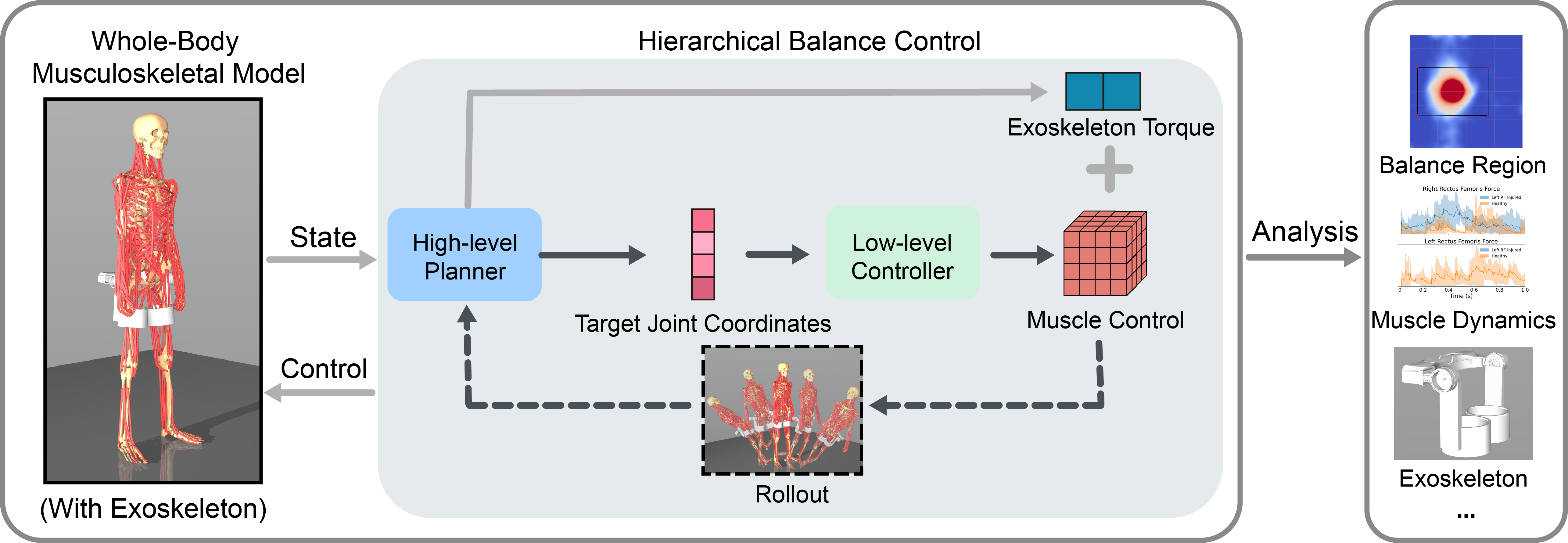
Fine-grained Measurements and Analysis
We collected simulated balance and fall with 100 times scale improvement from real-world datasets, and made it possible for multi-modal balance and fall measurements.
Data Collection: The collected data includes fine-grained center of mass trajectories and muscle dynamics.
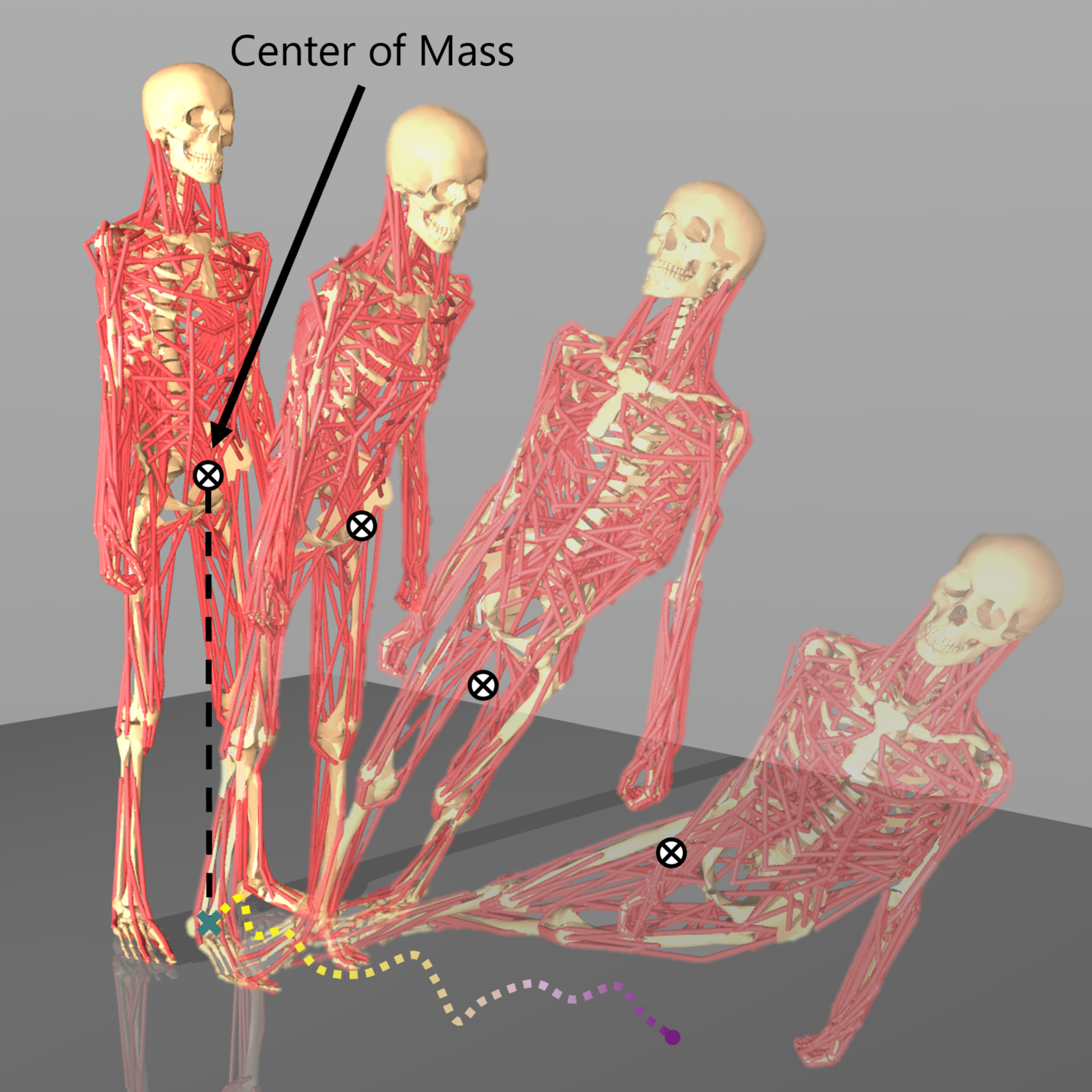
Balance Region Analysis: With the center of mass data, we measured a balance region formed by center of mass trajectories, which will converge within the polygon of support.
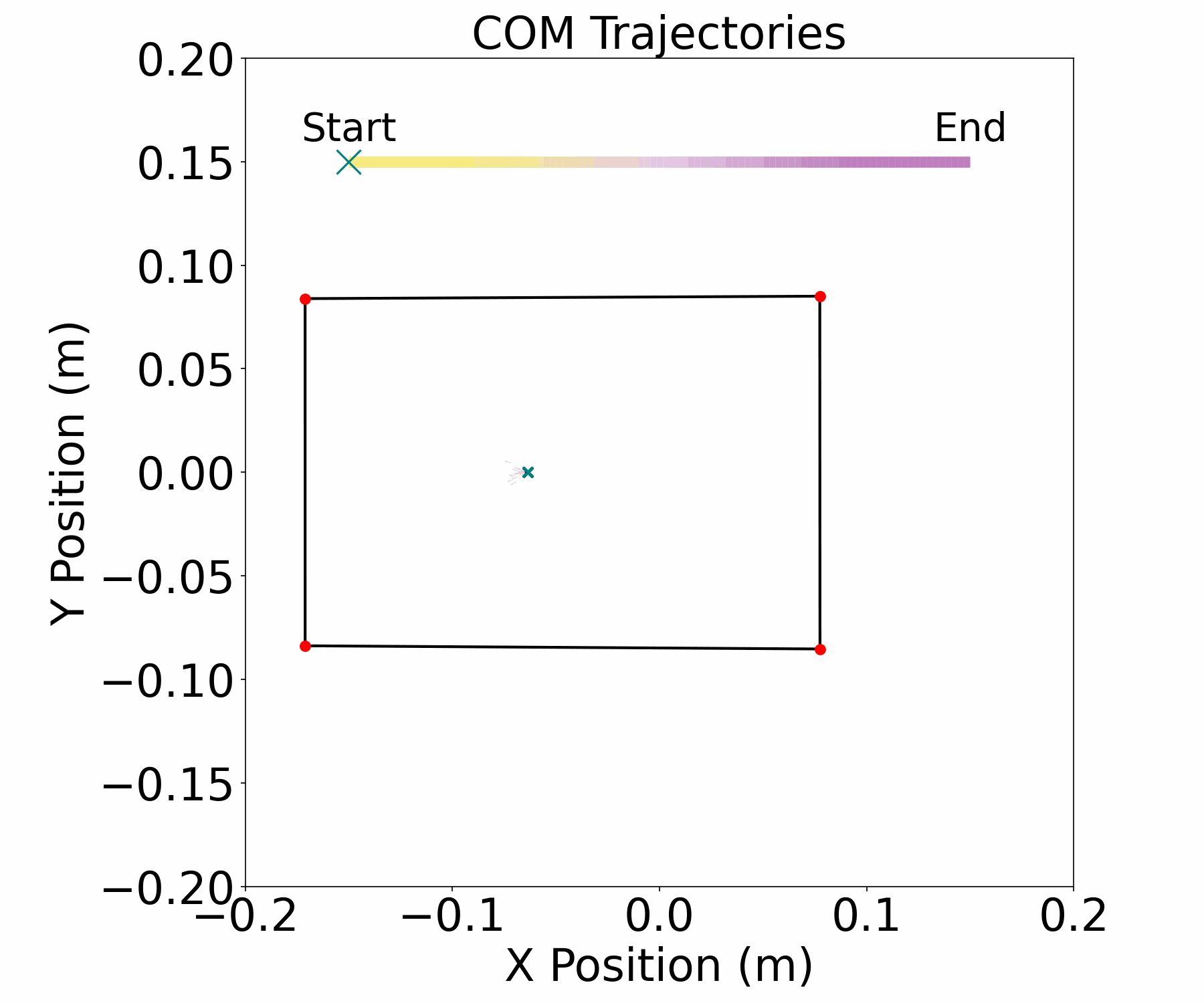
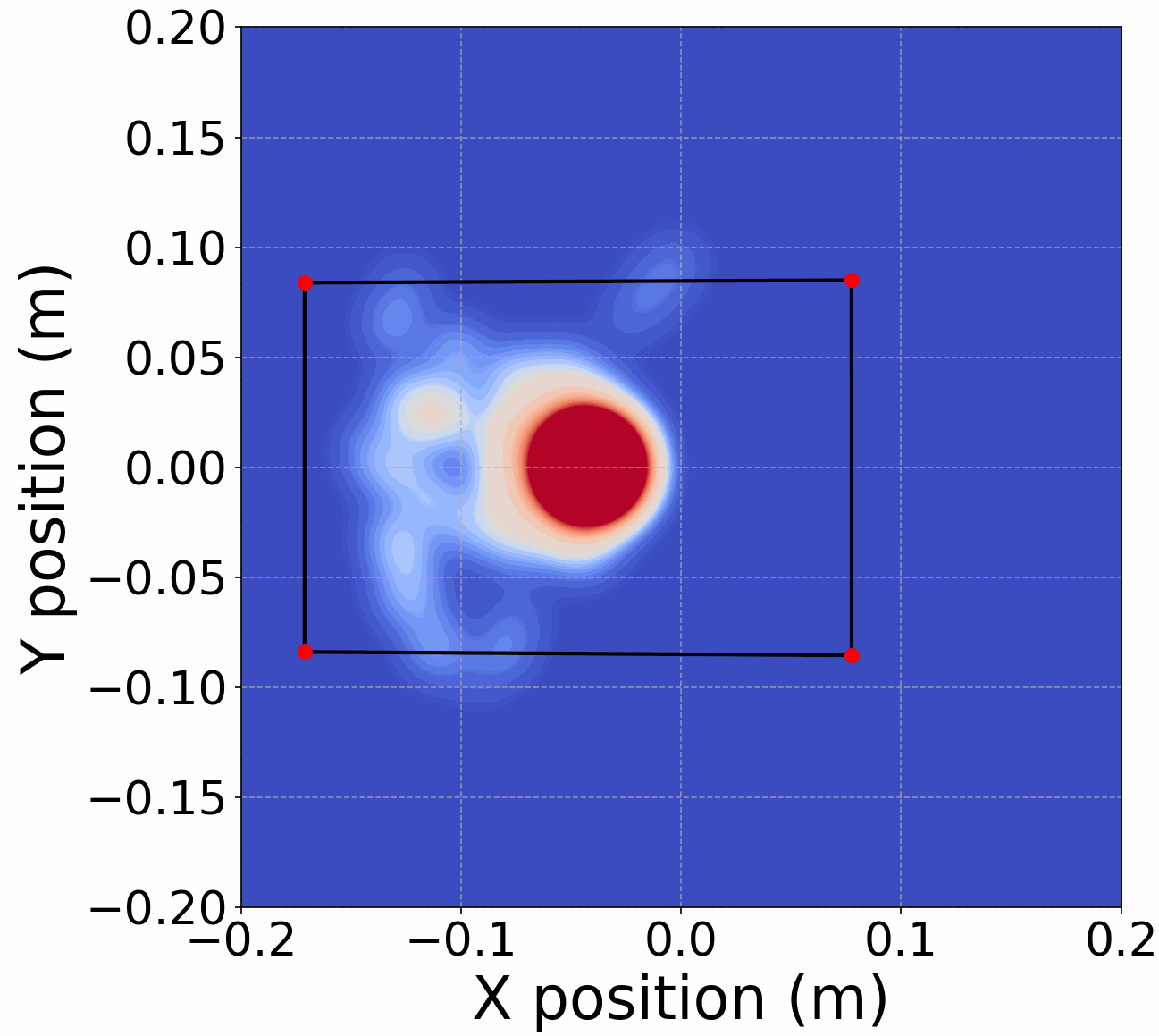
Clinical Validation: We also calculated the distribution of collision position of fall, which matches with clinical data.
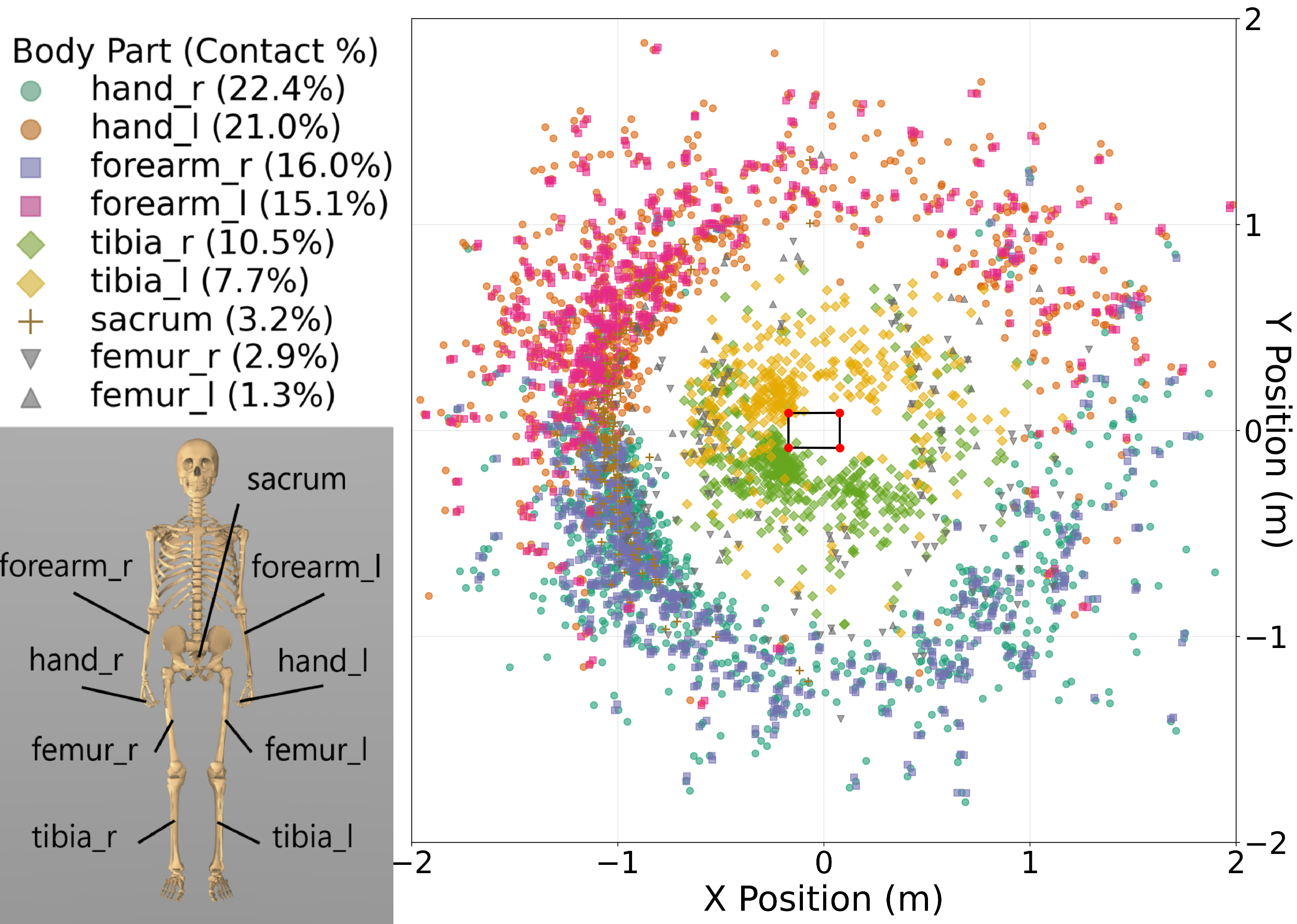
Multi-scenario Simulation of Human Balance and Falling Behaviors
To extend the simulation to more scenarios, we collected data with injured models, and found a common shrinkage of the balance region.
Rectus femoris injury
Peroneus longus injury
Adductor magnus injury
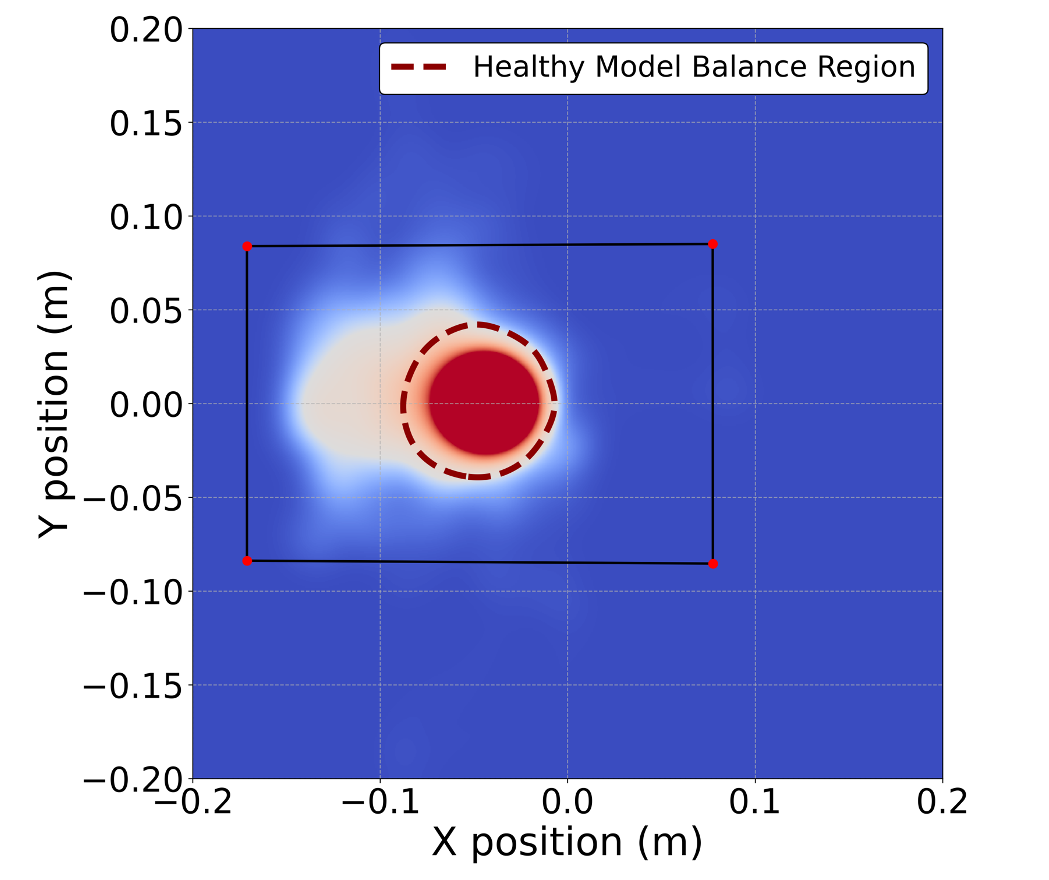
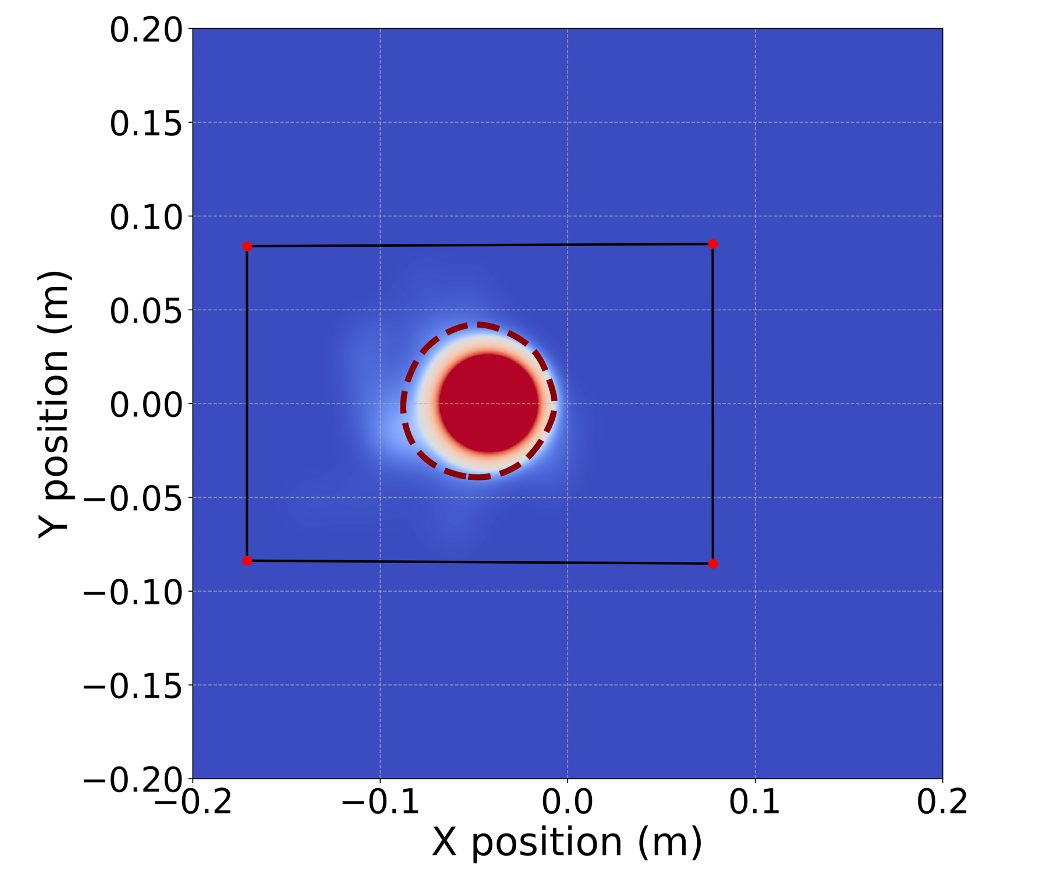
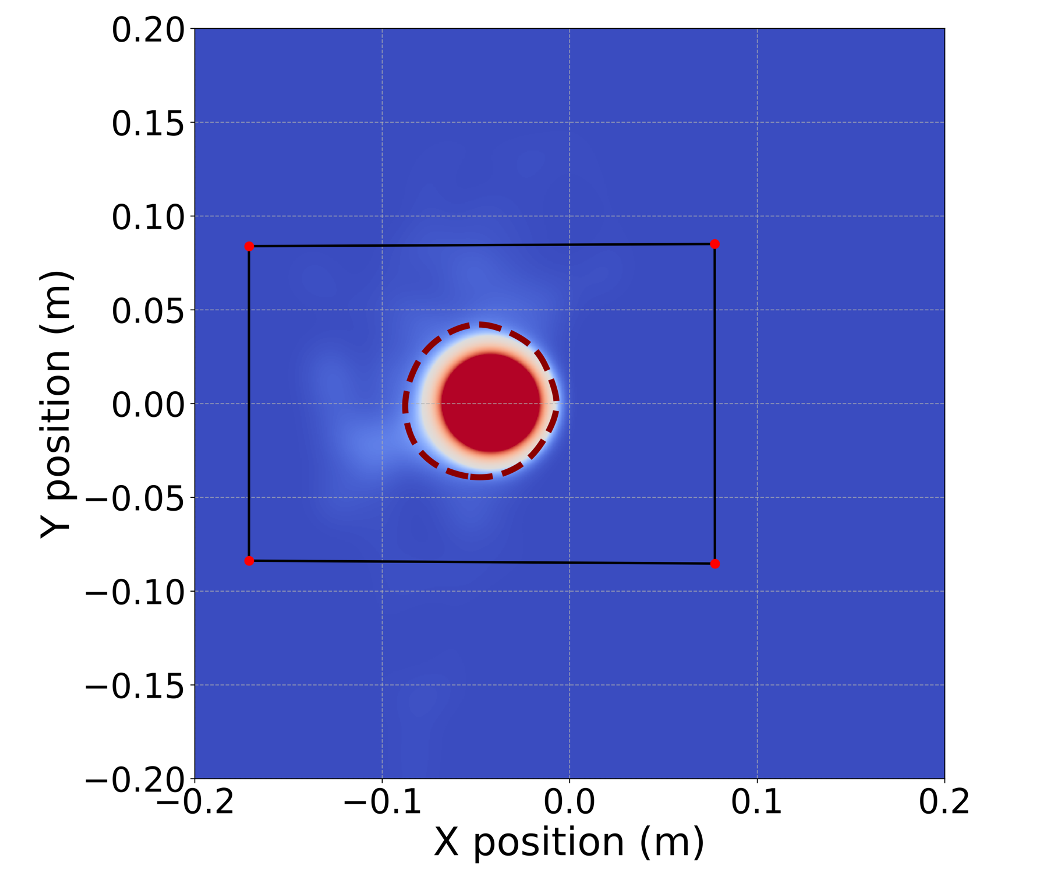
We deployed real-time hip exoskeleton assistance, successfully improved the balancing performance under perturbation, and reduced muscle effort.
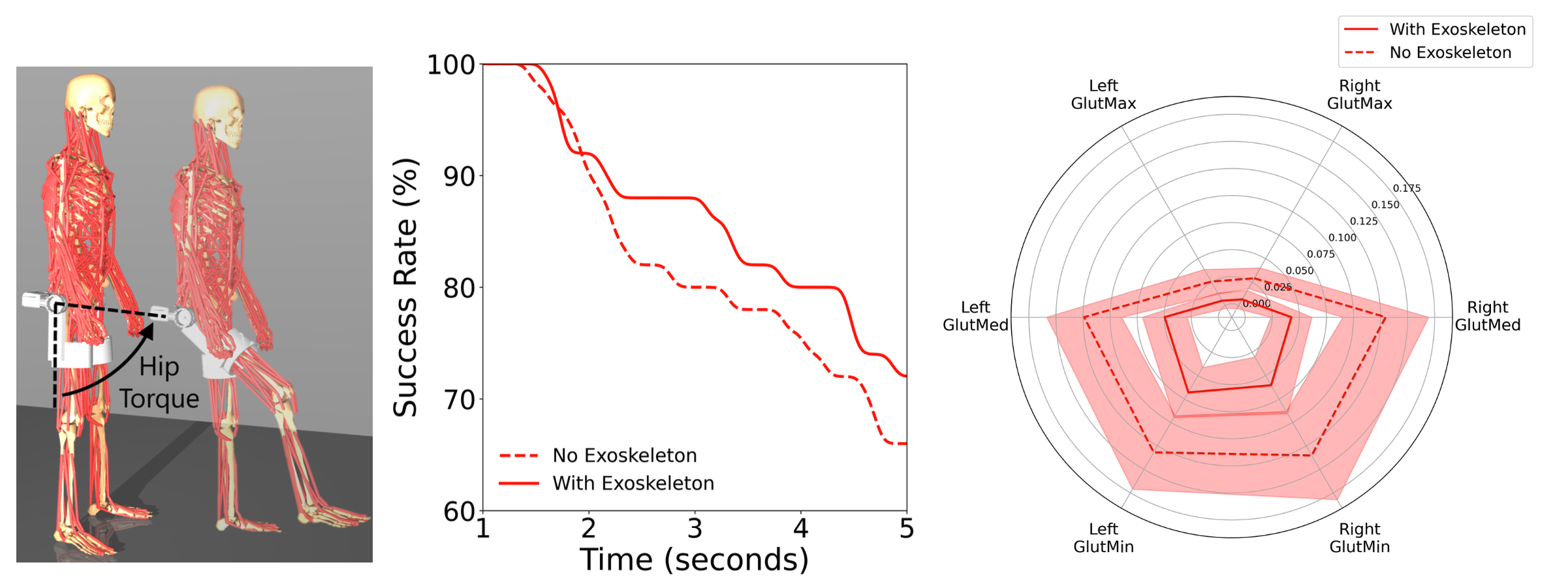
Exoskeleton assistance improves balance performance and reduces muscle activation levels.
BibTeX
@misc{ma2025bipedalbalancecontrolwholebody,
title={Bipedal Balance Control with Whole-body Musculoskeletal Standing and Falling Simulations},
author={Chengtian Ma and Yunyue Wei and Chenhui Zuo and Chen Zhang and Yanan Sui},
year={2025},
eprint={2506.09383},
archivePrefix={arXiv},
primaryClass={cs.RO},
url={https://arxiv.org/abs/2506.09383}, }